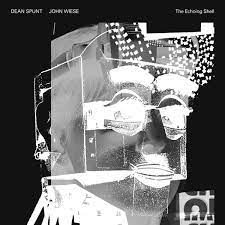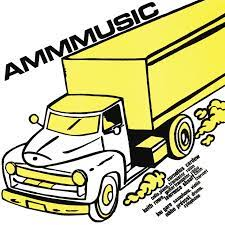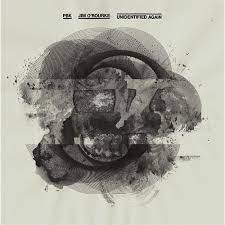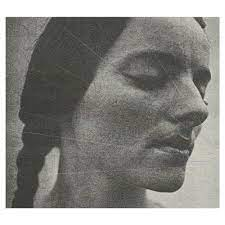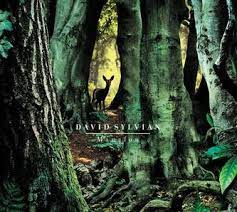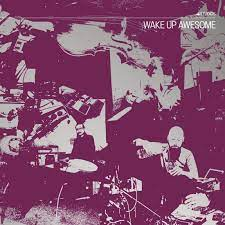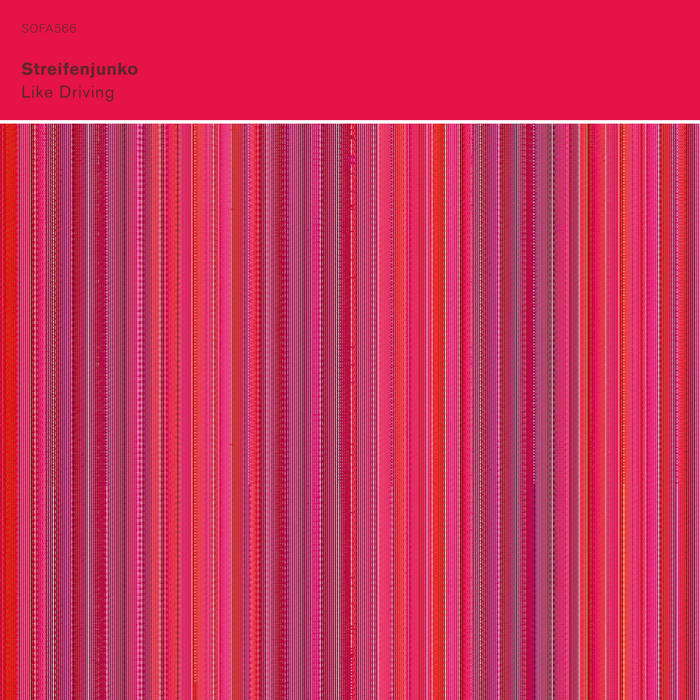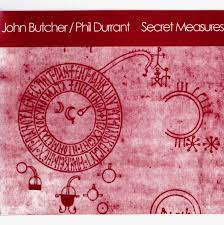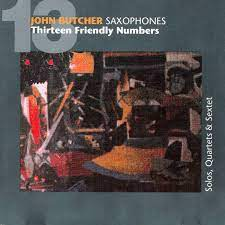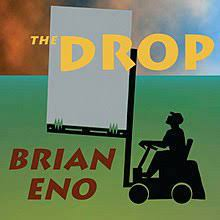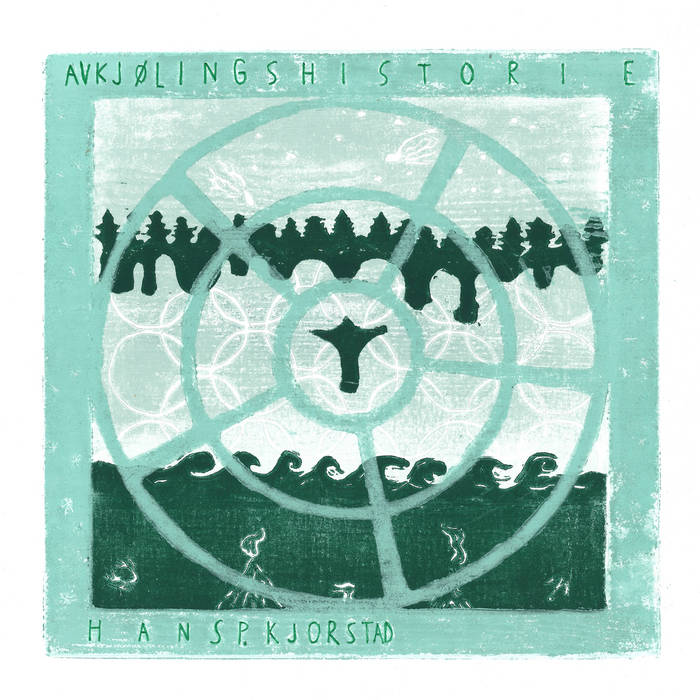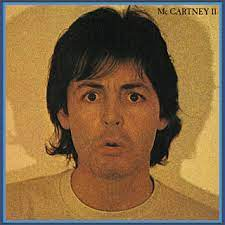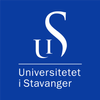I forkant av konsertene med Less Bugs, More Hugs og Alberts/Marhaug/Grenager/van der Loo ønsket jeg å gi publikum et lite innblikk i hvilken musikk som har stått som referenter til prosjektet og musikk som har vært viktig for meg opp gjennom. Utfallet ble noe annerledes enn en ren formidling av referenter, men ble (etter de doktorgradsfordrede litt nervøse forholdene) et sosialt rom hvor publikum kunne slå av en prat før konsertene startet.
DJ Referanseliste er ikke så god til ‘å lese rommet’ (det japanerne kaller Kūki wo yomu), men presenterer likevel plater som har vært mer eller mindre viktig for det kunstneriske utviklingsarbeidet til Kristoffer Alberts. DJen spiller kun vinylplater på tross av at arbeidet opprinnelig bygger på postgangen av kassetter og en Fluxusinspirert delingskultur fra 80-tallet. Selv om kassettspilleren uteblir denne gang, så finnes det mye annen musikk som prosjektet har knabbet fra og puttet inn i arbeidet. Noe av denne musikken spilles på T-Time vinbar.
AMM
AMMMUSIC
Label: Elektra Records
Utgitt: 1967
Cornelius Cardew – piano, cello and transistor radio
Lou Gare – tenor saxophone and violin
Eddie Prévost – drums, xylophone, bells and cymbals
Keith Rowe – Electric guitar and transistor radio
Lawrence Sheaff – cello, accordion, clarinet and transistor radio.
«The idea of layers superimposed on other layers has always seemed close to the actuality of AMM music.» -
Evan Parker (1996)
"Does group direction, or authority, depend on the strength of a leading personality, whose rise and fall is reflected in the projected image; or does the collation of a set of minds mean the development of another authority independent of all the members but consisting of them all"
Fra linernote (1967)
“There was nothing written when we went into the studio -- this was very much free improvisation. So, the selection of the group of musicians for each improvisation was paramount. I recognized on the day which pieces could work for me. The process was that I took the material away and then wrote and recorded the vocal line over in a couple of hours. So I couldn't analyze my contribution and that in a way was my form of improvisation -- and I enjoyed the rapidity of response.”
Sylvian i et intervju med The Wall Street Journal
With the seemingly endless possibilities of electronic instruments their strategy of finding simple tasks has been put to the test, and in the making of this album Streifenjunko was put back to the starting position to re-discover their focus and recognisable simplicity. The result is music with sharp edges and sudden changes, crude starting and stopping.
Fra SOFA hjemmeside.
"That´s what I like about samplers; pasting bits of the world into what you do and getting all of the non-musical associations that go with it – all of the associations of place and time and climate and so on. And so I guess I want to work with materials that aren´t so obviously musical. In fact I would say that I want to make something that isn't music, really"
Fra linernote
You shall investigate the unfamiliar until it has become familiar
You shall impose rhythmic repetition on the familiar
You shall vary this repetition in as many ways as possible
You shall select the most satisfying of these variations and develop these at the expense of others.
You shall combine and recombine these variations one with another.
You shall do all this for its own sake for an end in itself."
Fra linernote: Sitat fra "The naked Ape" av Desmond Morris."
Hans P. Kjorstad
Avkjøingshistoerie
Label: Motvind Records
Utgitt: 2022
Hans P. Kjorstad: komposisjon og fiolin
Ole-Henrik Moe: bratsj og fuglefløyte
Inga Margrete Aas: bass, objekter og fuglefløyte
John Andrew Wilhite-Hannisdal: bass og fuglefløyte
Eivind Lønning: trompet og fuglefløyte
Marthe Lea: saksofon
Andreas Hoem Røysum: klarinetter og fuglefløyte
Rolf-Erik Nystrøm: saksofoner
Fredrik Rasten: Akustisk og elektrisk gitar og fuglefløyte
Anja Lauvdal: just tuned harmonium, piano og objekter
Michaela Antalova: perkusjon
The composition was prepared with the specific musicians in the ensemble as models and they have thus had a great impact on how this story sounds. Each of the musicians contributes with their own unique sound palette and their personalities have been forming of the roles they have in the piece.
Fra bandcampsiden https://hanskjorstad.bandcamp.com/album/avkj-lingshistorie
Prosjektets hjelpemannskap
Som nevnt i teksten har Lasse Marhaug vært en viktig referent for prosjektet, både med hans innspilte referanser, men også med måten han arbeider med alt rundt det som faktisk spilles, som en personifisert prototype av Christopher Smalls musicking.
Petter Frost Fadnes har vært hovedveileder for prosjektet mitt, og har bidratt langt over hva som forventes av en slik jobb. Han har fulgt prosjektet før graden ble påbegynt, og har arbeidet og hjulpet til med alle aspekter av prosessen; fra å lesse på med litteratur og plateinnspillinger, til å gi tommel opp/tommel ned på idéer. Han er også medforfatter på det kommende bokkapittelet Streetwise in the artistic city: Bugs and Hugs.
Per Zanussi har vært biveileder og den jeg har ringt ned når jeg har stått ved utfordrende etiske og estetiske korsveier eller hvis prosjektet har stoppet helt opp. Hans lange svar på korte spørsmål har vært helt uvurderlige. Han var også deltagende musiker på Bugs and Hugs og Less Bugs, More Hugs. Hans rolle som dobbeltagent, ved å fungere både som manipulert musiker, og med en birolle i doktorgraden var beroligende i den form av at han kunne formidle relativt ærlig hvordan det muligens kunne oppleves å være musiker på prosjektene mine.
Jeg har også vært særdeles heldig med å ha veldig mange andre og veldig gode musikere med på prosjektet. Selv om utfallet på de ulike prosjektene alltid har vært uvisst og etisk betenkelig har i mine ører samtlige likevel gitt av seg selv og sin kompetanse. Tidvis har de også fungert som komponister på prosjektene i vel så stor grad som meg. Mine uunnværlige ‘medspillere’ har vært:
Maja Solveig Kjelstrup Ratkje Stine Janvin Joh, Britt Pernille Frøholm, Didrik Ingvaldsen, Mette Rasmussen, Lene Grenager, Tanja Orning, Jasper Stadhouders, Terrie Hessels, Mats Äleklint, Nils Henrik Asheim, Frode Haltli, Ingebrigt Håker Flaten, Per Zanussi, Dag Erik Knedal Andersen, Didrik Ingvaldsen, Gunhild Seim, Petter Fadnes, Arild Hoem, Gaute Vikdal, Dominique Brackeva, Signe irene Time, Gjertrud Økland, Olav K. S. Olsen, Johan Egdetveit, John Lilja, Thomas Bang, Dag Egil Njaa, Vidar Schanche, Dag Magnus Narvesen, Ståle Birkeland, Marius Munthe-Kaas, Nels Cline, Gro Austgulen, Simen Kiil Halvorsen, Eduardo Scaramuzza, Gaute Granli, Agnes Hvizdalek, Per Åke Holmlander, Paal Nilsse-Love, Ludger Hennig, Bernt Isak Wærstad, Ernst van der Loo og Lasse Marhaug
Som nyinnflyttet til Stavanger har det vært utfordrende å manøvrere seg i landskapet av kunstnere, musikere, arrangører, teknikere og tilsynelatende vennlige fjes. Bassist og musiker Jens Borge har tatt meg under sin vinge og introdusert meg for det som kan krype og gå av kompetanse i byen. Jeg hadde ikke blitt ferdig med prosjektet hvis det ikke var for hans sosialt oppegående og inkluderende vesen. Han fungerte også som initiativtager, kurator og tekniker på prosjektet Primary Antibody.
Maria Dommersnes Ramvi er min kjæreste og mor til mine barn. Hun kjenner meg ofte bedre enn jeg gjør selv, og vet stort sett hvilke prosjekter som krever mye fravær fra familien og hvilke prosjekter som egentlig er for dårlige fra starten av (hvor jeg får mer ut av å være en god far enn å gå inn i lange destruktive tankerekker som ikke får et godt kunstnerisk utfall). Vil ikke utdype her hvor umåtelig glad jeg er i henne, men jeg kan nevne at hun er den som har hatt mest å si for at jeg har holdt meg på beina – rent estetisk sett.
Mine barn Eskil og Ellen har fungert som en sunn og positiv brems på prosjektet. Hadde det ikke vært for de to hadde jeg rota meg enda lenger vekk inn i mitt eget hode enn jeg allerede har gjort.
Tou er en kulturfabrikk i Stavanger som aldri har stilt spørsmålstegn ved prosjektene mine, men har åpnet opp rom og tid for at jeg kunne teste ut prosesser og visningsformer. Jeg har veldig vanskelig å se for meg at jeg kunne fått mulighet til å gjøre den obligatoriske prøvingen og feilingen, hadde det ikke vært for blant annet de vennlige og særs kunnskapsrike Per Arne Alstad, Morten Gjersum, Daria Zarbeeva, Inge Engelsvold, Sebastian Waldejer, Ole Reidar Gudmestad og Børge Fjordheim. Tou åpnet også opp hele bygget for at jeg fikk gjennomført min kunstneriske avslutning på prosjektet.
Mesteparten av tiden har jeg brukt på Fakultet for utøvende kunstfag på UiS. Her har jeg hatt mulighet til å bråke og styre på i et eget kontor med vindu. Den overordna årsaken til at jeg har brukt så mye tid på dette stedet er på grunn av de vennlige og inkluderende menneskene i gangene, på lunsjrommet og på biblioteket. Raymond Storaunet Lavik og Mark Drews har i tillegg vært på den ekstreme delen av tilbudssiden når det kommer til å låne utstyr og lære meg hvordan jeg kan bruke og utnytte digitale programvare.
Litteraturliste
Agemennone, M., Palma, D., & Sarno, G. (2023). Sounds of the pandemic. New York, NY: Routledge.
Alberts, K. (2021). Bugs and Hugs By Block Ensemble. Lisbon, Portugal: Clean Feed Records.
Alberts, K., & Marhaug, L. (2015). Organistskolen. KBA Records.
Alberts, K., & Marhaug, L. (2016). Generasjon Lindemenn. KBA Records.
Alberts, K., & Marhaug, L. (2020). Lensherrer og Prelater. KBA Records.
AMM. (1996). LAMINAL. On LAMINAL. Matchless Recordings.
Auslander, P. (2008). Liveness: Performance in a mediatized culture: Routledge.
Bailey, D. (1989) Derek Bailey interviewed by Henry Kaiser KPFA 1989/Interviewer: H. Kaiser. KPFA, https://www.youtube.com/watch?v=qAYJwjAEc0o.
Bailey, D. (1993). Improvisation: Its nature and practice in music. New York: Da Capo Press.
Bailey D. (Director). (1992). [Television series episode]. In Marre, J. (Executive producer), On the edge - Improvisation in Music.
Barrett, N. (2002). Spatio-musical composition strategies. Organised Sound, 7(3), 313-323.
Borgdorff, H. (2010). The production of knowledge in artistic research. The Routledge companion to research in the arts, 44-63.
Borgo, D. (2018). The Art of Improvisation in the Age of Computational Participation. In The Routledge Companion to Jazz Studies (pp. 411-421): Routledge.
Boutwell, B. (2012). Morton Feldman's graphic notation: Projections and trajectories. Journal of the Society for American Music, 6(4), 457-482.
Brackett, J. (2008). John Zorn: Tradition and Transgression: Indiana University Press.
Braxton, A. (2019). Braxton, Anthony. On Quartet (New Haven). Firehouse 12 Records.
Butcher, J. (1985). Fonetiks. BEAD records.
Butcher, J. (1991). 13 Friendly Numbers. Acta.
Butcher, J. (2011). Freedom and Sound: This Time It’s Personal. Point of Departure: An Online Music Journal, 35.
Butcher, J. (2019). KAREN GWYER | JOHN BUTCHER AND LASSE MARHAUG [Press release]
Butler, J. (2002). Gender trouble: routledge.
Callingham, A. E. (2007). Spontaneous music: the first generation British free improvisers. University of Huddersfield,
Cardew, C. (1969). A Scratch Orchestra: draft constitution. The Musical Times(110), 617+619.
Coltrane, J. (1974). Interstellar Space. On Interstellar Space. Impulse.
Compilation. (2003). SOUN. On Soun - An Anonymous And Random Compilation / Composition. Gameboy Records.
Cook, N. (2006). Uncanny moments: juxtaposition and the collage principle in music. Approaches to Meaning in Music, 107-134.
Crispin, D. (2019). Artistic Research as a Process of Unfolding. Paper presented at the Research Catalogue.
Csikszentmihalyi, M., & Csikszentmihalyi, I. S. (1992). Optimal experience: Psychological studies of flow in consciousness: Cambridge university press.
Currie, S. (2015). In N. Gebhardt & T. Whyton (Eds.), The cultural politics of jazz collectives: This is our music. By!!: Routledge.
Dahl, P. (2019). Utøverkunnskap: Cappelen Damm Akademisk.
Das + Jerman, J. H., John + PBK. (1988). Chain Mail Collab. On Chain Mail Collab. Not published.
Davis, R. (2001). John Butcher: inside the narrative by Rhodri Davies. Avant Magazine, 34-35.
(2021). MTF Podcast 05: Jan Bang: Live Sampling https://www.youtube.com/watch?v=0nAupRoAWXU
Dura, M. T. (2006). The phenomenology of the music-listening experience. Arts Education Policy Review, 107(3), 25-32.
Edwards, J. (2011). ‘SILENCE BY MY NOISE'’: AN ECOCRITICAL AESTHETIC OF NOISE IN JAPANESE TRADITIONAL SOUND CULTURE AND THE SOUND ART OF AKITA MASAMI. Green Letters, 15(1), 89-102
Eno, B., & Battcock, G. (1976). Generating and Organizing Variety in the Arts. Studio International (November-December 1976), 279-283.
Fadnes, P. F. (2020). Jazz on the line: improvisation in practice: Routledge.
Fadnes, P. F. (2015). Improvisational conduct and case
studies from the margins. The Cultural Politics of Jazz
Collectives: This Is Our Music, 197.
Fischer-Lichte, E. (2008). The transformative power of performance. In The Transformative Power of Performance (pp. 19-31): Routledge.
Friedman, K. (1995). The early days of mail art. Eternal network: A mail art anthology, 3, 16.
Goldmark, D. I., & Keil, C. (2011). Funny pictures: animation and comedy in studio-era Hollywood: Univ of California Press.
Holt, F. (2009). Genre in popular music: University of Chicago Press.
house, A. t. (2020). Around the house.
Huber, H. D. (2004). Artists as curators–curators as artists?
Hunter, A. (2020). Strategies for Composing for Large Groups of Improvising Musicians (Doctoral). Manchester Metropolitan University,
Ives, C. (1925). Three Quarter-Tone Pieces. On Three Quarter-Tone Pieces. Apex.
Jeffery, C. (2015). The artist as curator.
Kane, B. (2014). Sound unseen: Acousmatic sound in theory and practice: Oxford University Press, USA.
Kartomi, M. (2014). Concepts, terminology and methodology in music performativity research. Musicology Australia(2).
Kenny, B. G., Martin. (2002). Improvisation. In G. McPherson & R. Parncutt (Eds.), The science & psychology of music performance: Creative strategies for teaching and learning (pp. 117-134). New York: Oxford University Press.
KitchenOrchestra. (2022). https://www.kitchenorchestra.com/about.
Leaver-Yap, I. (2010). Meredith Monk intervied by Isla Leaver-Yap. The voice is a a language.
Lehn, T. L., Paul. (2003). Achtung. GROB.
Lewis, G. E. (2008). A power stronger than itself: The AACM and American experimental music: University of Chicago Press.
Lopes, A. (2017). Jazz as process: A different perspective for the 21st century.
Mapp, C. (2022). What music do you play? (Doctoral). Birmingham University,
Marranca, B. (2014). Conversations with Meredith Monk. New York, NY: PAJ Publications.
Miles Huber, D., & Runstein, R. E. (2010). Modern Recording Techniques 7thEd. In: Oxford: Elsevier Inc.
Minton, P. (1986). The Berlin Station. On The Berlin Station. FMP.
Murphy, T. S. (2004). The Other’s Language: Jacques Derrida Interviews Ornette Coleman, 23 June 1997. Trans. Timothy S. Murphy. Genre: Forms of Discourse and Culture, 37(2), 319-328.
Nagari, B. (2015). Music as image: Analytical psychology and music in film: Routledge.
Nergaard, R. (2019). Exoterm. On Exit into the corridor. Hubro.
Nettl, B. (2003). The Improvisational og Musical Dialogue: A Phenomenology of Music. In B. E. Benson (Ed.). New York: Cambridge University Press.
Noble, A. (2016). Coldest Second Yesterday. Clean Feed Records.
Novak, D. (2013). Japanoise: music at the edge of circulation: Duke University Press.
Parker, E. (2018). De motu: Lenka lente.
Parry, M. (1932). Studies in the epic technique of oral verse-making: ii. the Homeric language as the language of an oral poetry. Harvard Studies in Classical Philology, 43, 1-50.
Pepl, H. (1990). works for Kronos quartet.
Peplau, H. E. (1988). Interpersonal relations in nursing: A conceptual frame of reference for psychodynamic nursing: Bloomsbury Publishing.
Peroni, L. (2023). Pandemic Soundscaping.
Plunkett, E. M. (1977). The New York Correspondence School. Art Journal, 3(36), 233-235.
Pressing, J. (1987). Improvisation: methods and models in: generative processes in music. Oxford University Press.
Ratkje, M. S. K., Alberts, K., Andersen, D. E. K., & Strøm, J. R. (2013). Rasaka. KBA Records.
Roig-Francolí, M. A. (2021). Understanding post-tonal music: Routledge.
Rose, S. (2017). The lived experience of improvisation: in music, learning and life: Intellect Books.
SAKA. (2014). Cementen. On Cementen. Stone Floor Records.
Schaeffer, P. (2017/1966). Treatise on Musical Objects: An Essay Across Disciplines (Vol. 20): University of California Press.
Schuiling, F. (2019). Notation Cultures: Towards an Ethnomusicology of Notation. Journal of the Royal Musical Association, 144(2), 429-458.
Sharma, P. (2009). David Sylvian and the Mysterious Sound of Inspiration. The Wall Street Journal
Sloterdijk, P. (2018). The aesthetic imperative: writings on art: John Wiley & Sons.
Small, C. (1998). Musicking: The meanings of performing and listening: Wesleyan University Press.
Smalltownsupersound. (2022). On Frijazz mot rasisme. Smalltown Supersound.
SME. (1973/2007). On Quintessence. EMANEM.
Stemland, T. D. (2022). Lasse Marhaug - Alive. Falck Forlag AS: Christer Falck.
Stewart, J. (2014). 29 Improvised Dissonance: Opening Statements. The Improvisation Studies Reader: Spontaneous Acts(New York, NY), 213.
Stockhausen, K., & Barkin, E. (1962). The concept of unity in electronic music. Perspectives of New Music, 39-48.
Sylvian, D. (2009). On Manofon. Samadhi Sound.
Thorley, M. (2023). The Pandemic as Catalyst for Remotivity in Music (M. Agemennone, D. Palma, & G. Sarno Eds.): Routledge.
Tilbury, J. (1983). Cornelius Cardew. Contact, 26, 4-11.
TIme, S. I. (2016). Regnbueponniens Significante Påskesang. On Regnbueponniens Significante Påskesang. Periskop.
Toelle, J., & Sloboda, J. A. (2021). The audience as artist? The audience’s experience of participatory music. Musicae scientiae, 25(1), 67-91.
Toop, D. (2019). Goodbye Intiution. from Research Catalogue
Tweedy, J. (2009). Wilco. On Wilco. Nonesuch.
Ventzislavov, R. (2014). Idle arts: Reconsidering the curator. The journal of Aesthetics and art criticism, 72(1), 83-93.
Watson, B. (1998). Invisible Jukebox. The Wire Magazine, 178.
Watson, B. (2004). Derek Bailey and the story of free improvisation: Verso.
Whyton, T. (2013). Beyond A love supreme: John Coltrane and the legacy of an album: OUP USA.
Windsor, L. (2000). Through and around the acousmatic: the interpretation of electroacoustic sounds. Music, electronic media and culture, 7-35.
Yassin, R. (2021). Phantom Orchestra.
Zanussi, P. (2017). Natural Patterns - Music Making with an ensemble of improvisers.
Zorn, J. (2002). Cobra. On Cobra. TZADIK.

